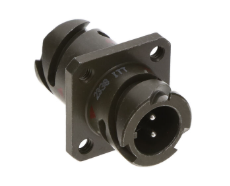Expert panel uncovers the hidden barriers to women's wellbeing at work
To mark International Women’s Day, YuLife hosted The Wellbeing Gap, a live panel discussion at its Old Street headquarters in London that was streamed online. The discussion explored why women continue to face systemic challenges in workplace wellbeing and what organisations can do to bridge the gap.
Backed by YuLife and YouGov research, the discussion revealed that only 54% of women rate their wellbeing at work as good, compared to 63% of men. The expert panel explored why traditional workplace policies often fail to meet women’s needs and outlined practical solutions for employers to create a culture of trust, flexibility, and support.
Expert panellists:
- Sadie Rose – Moderator, Head of Key Accounts, YuLife
- Emma Jamil – Founder, Be Unstoppable (Career coaching for women in HR)
- Dr Dupe Burgess – Founder & CEO, Bloomful (Women’s health & gynaecology specialist)
- Hayley Standen – HR Professional, Mindset Coach and British Triathlon Coach
Key discussion points and quotes
The wellbeing gap: why women report lower wellbeing at work
“Women’s health has historically been shrouded in stigma, secrecy, and shame. That still affects us today,” Dr Dupe Burgess.
“Women are conditioned to put others’ needs first. This makes it difficult to advocate for their own wellbeing at work,” Emma Jamil.
- Women face systemic barriers – Health stigma, caregiving responsibilities, and workplace bias continue to impact women’s wellbeing.
- Fear of judgement – Many women avoid discussing wellbeing needs due to concerns about discrimination.
How organisations can take action
“You can have all the right policies, but if people don’t feel safe using them, they’re useless,” Emma Jamil.
“The biggest barrier to women’s wellbeing at work? A culture that makes them feel judged for prioritising it,” Dr Dupe Burgess.
- Flexible working should be the norm – women are 46% more likely to request flexible work, yet many feel unable to ask
- Equipping managers – leaders must be trained in emotional intelligence to support employees effectively
- More women in leadership – senior female role models help reshape workplace culture
The role of leadership and community
“We need more women in leadership—not just filling roles, but shaping workplace culture,” Hayley Standen.
“Having a safe space to share struggles can be transformative,” Emma Jamil.
- Community-driven support – workplace wellbeing groups empower women to connect and share experiences
- Transparent leadership – executives sharing their own struggles helps normalise open conversations
Audience Q&A highlights
- Q: What’s one change you’d like to see in workplace wellbeing in the next five years?
- A: “That we stop treating flexible working as a ‘perk’ and start making it a default,” Dr Dupe Burgess.
- A: “More women in leadership—so we’re not just fitting into the system, we’re reshaping it,” Hayley Standen.
- Q: How do organisations manage backlash when promoting women’s wellbeing?
- A: Approach resistance with curiosity, not conflict.
- A: Ensure initiatives are inclusive—it’s about equity, not exclusion.
Final thoughts
- Culture is key – policies mean nothing if employees don’t feel safe using them
- Flexible working must be embedded – It’s essential for workplace equity
- More women in leadership are needed – And they shouldn’t have to conform to outdated leadership models
“If we truly want to close the wellbeing gap, we must stop treating women’s needs as ‘special’ and start integrating them into the foundation of workplace culture,” Dr Dupe Burgess.
“The companies that prioritise wellbeing will be the ones that attract and retain the best talent. It’s that simple,” Hayley Standen.







